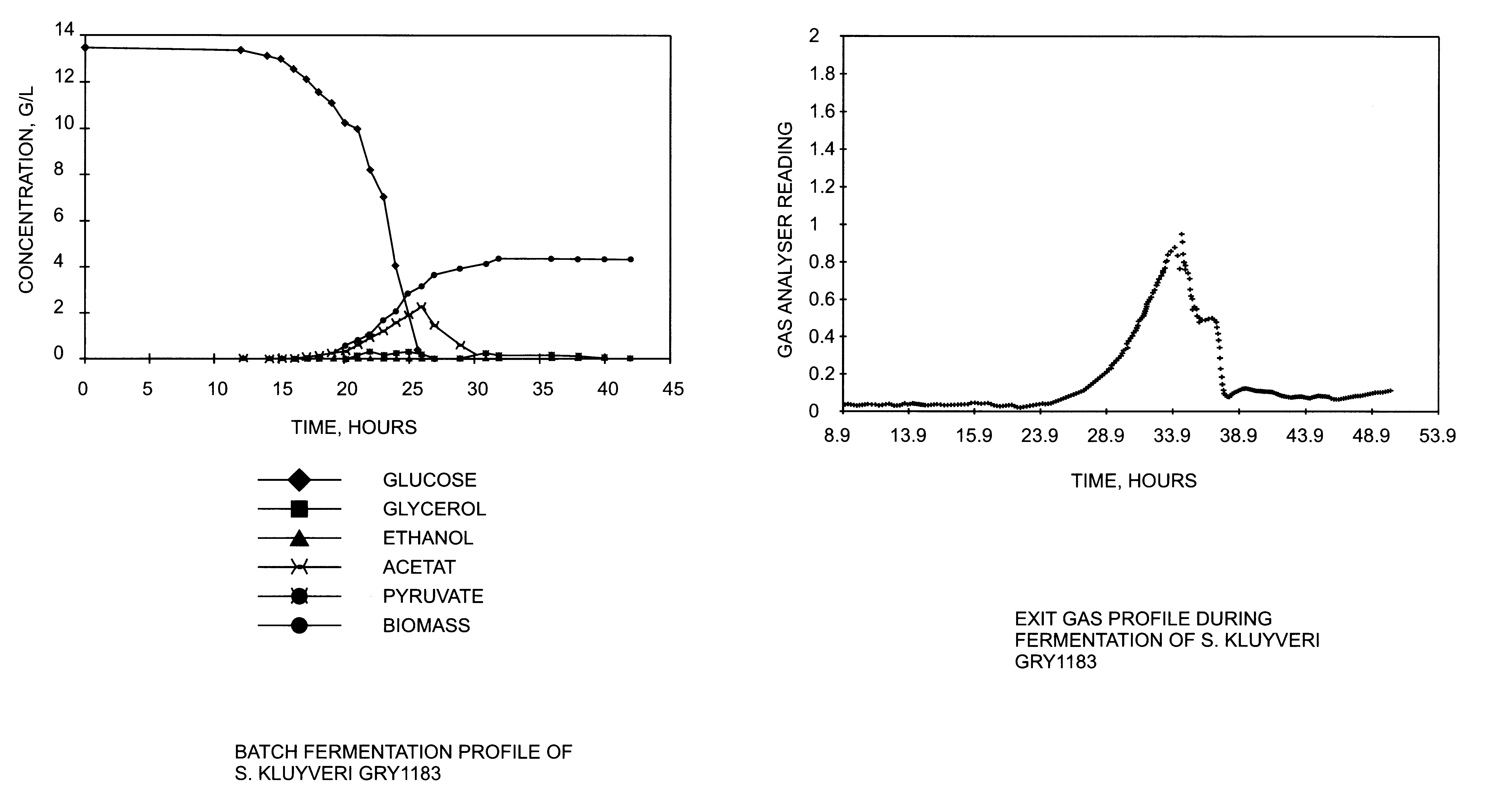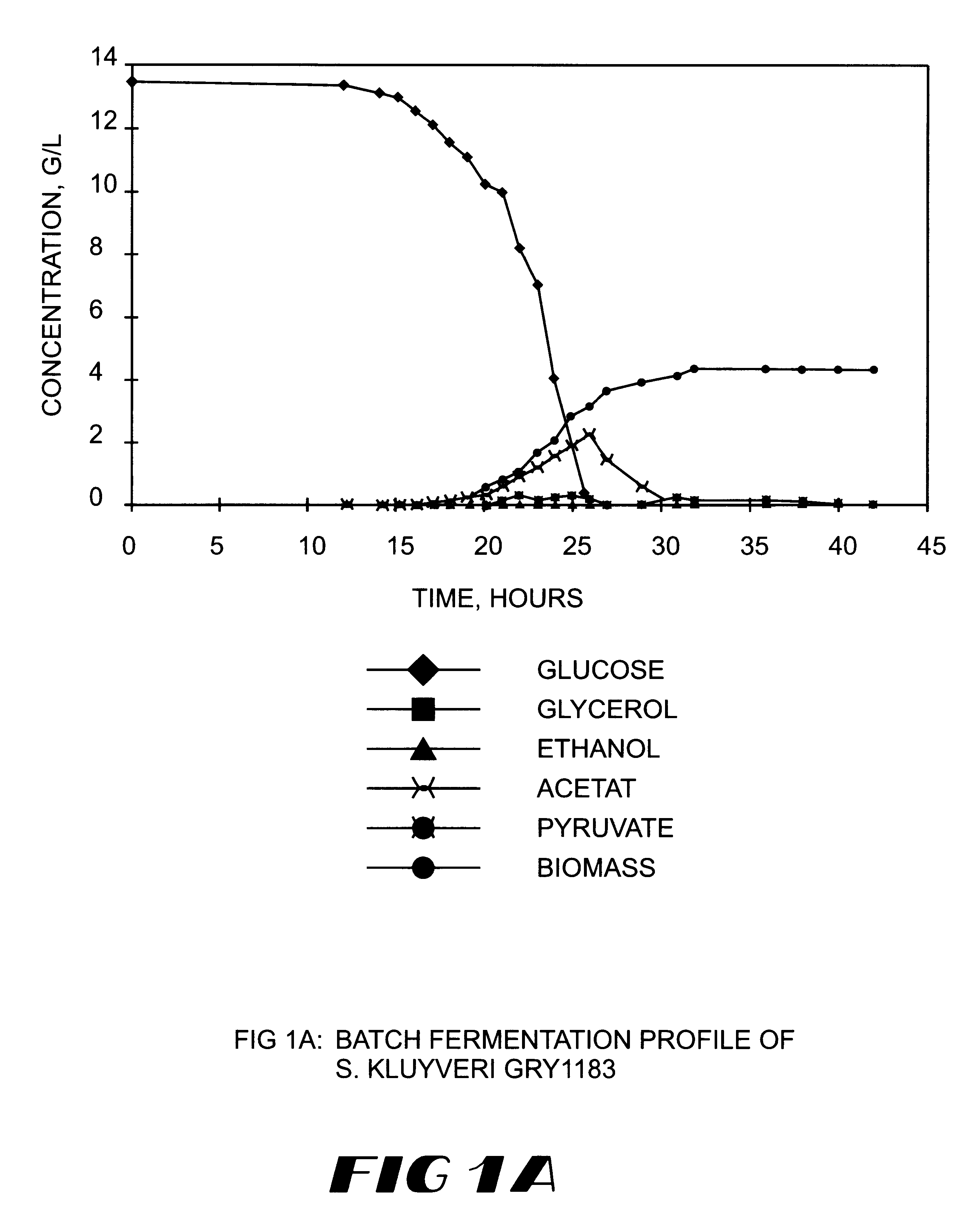Method for the production of heterologous polypeptides in transformed yeast cells
a technology of transformed yeast cells and polypeptides, which is applied in the direction of microorganisms, biochemical equipment and processes, fungi, etc., can solve the problems of low yield of some heterologous proteins in s. cerevisiae, limited commercial application of s. cerevisiae, and inability to fully realize the effect of transformation
- Summary
- Abstract
- Description
- Claims
- Application Information
AI Technical Summary
Problems solved by technology
Method used
Image
Examples
example 2
Investigation on the Effect of Different Phosphate Levels on Proteinase A Production
The effect of phosphate level present in the fermentation medium on the proteinase A production, was studied using medium containing fixed ammonium sulphate concentration of 7.5 gl.sup.-1 with three different Potassium di hydrogen phosphate levels of 3.5 gl.sup.-1, 5.25 gl.sup.-1 and 7 gl.sup.-1. The chemostat was run at 0.085 dilution rate. The results obtained at three phosphate levels are listed in Table 2. It was observed that increase in phosphate level increased the proteinase A yields in the medium.
example 3
Investigation on the Effect of Different Ammonium Levels on Proteinase A Production
The effect of ammonia present in the fermentation medium on proteinase A production, was investigated in a medium containing fixed potassium dihydrogen phosphate concentration of 3.5 gl.sup.-1 with three different ammonium sulphate concentrations of 7.5 gl.sup.-1, 11.5 gl.sup.-1 and 15 gl.sup.-1. These studies were carried out at a dilution rate of 0.12 h.sup.-1. It has been observed that increased level of ammonia increases the proteinase A in the medium when the level of ammonium sulphate was increased from 7.5 gl.sup.-1 to 11.25 gl.sup.-1. Further increase in ammonia level resulted in complete absence of proteinase A in extracellular and intracellular medium. This was due to repression of PEP4 expression at this ammonium level. The results are shown in Table 3.
example 4
(1) Studies on Proteinase A Production in Chemostat Cultivation Using Optimised Medium
The strain S. kluyveri AS57 was tested for proteinase A production in a chemostat culture using the optimised medium with concentrations of Ammonium sulphate (11.25 gl.sup.-1 ), and Potassium di hydrogen phosphate (7 gl.sup.-1 ) along with other chemicals: trace metals and vitamins. These studies were carried out at two different dilution rates of 0.085 h.sup.-1 and 0.12 h.sup.-1. The results are presented in Table 4.
PUM
| Property | Measurement | Unit |
|---|---|---|
| Time | aaaaa | aaaaa |
| Temperature | aaaaa | aaaaa |
| Temperature | aaaaa | aaaaa |
Abstract
Description
Claims
Application Information
 Login to View More
Login to View More - R&D
- Intellectual Property
- Life Sciences
- Materials
- Tech Scout
- Unparalleled Data Quality
- Higher Quality Content
- 60% Fewer Hallucinations
Browse by: Latest US Patents, China's latest patents, Technical Efficacy Thesaurus, Application Domain, Technology Topic, Popular Technical Reports.
© 2025 PatSnap. All rights reserved.Legal|Privacy policy|Modern Slavery Act Transparency Statement|Sitemap|About US| Contact US: help@patsnap.com



